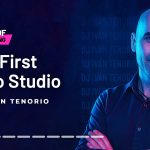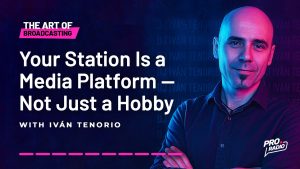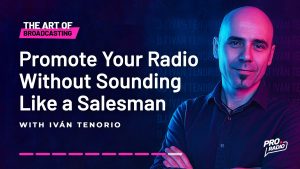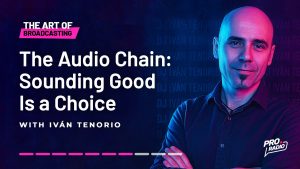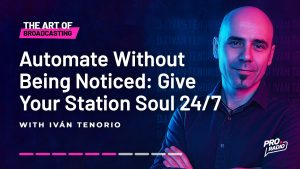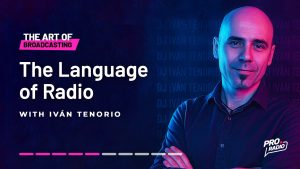
- arrow_back Home
- keyboard_arrow_right The Art Of Broadcasting
Chapter 1: The Radio of Your Dreams Fits in Your Pocket
The Art Of Broadcasting 12 327 Pro Radio WordPress Theme May 2, 2025
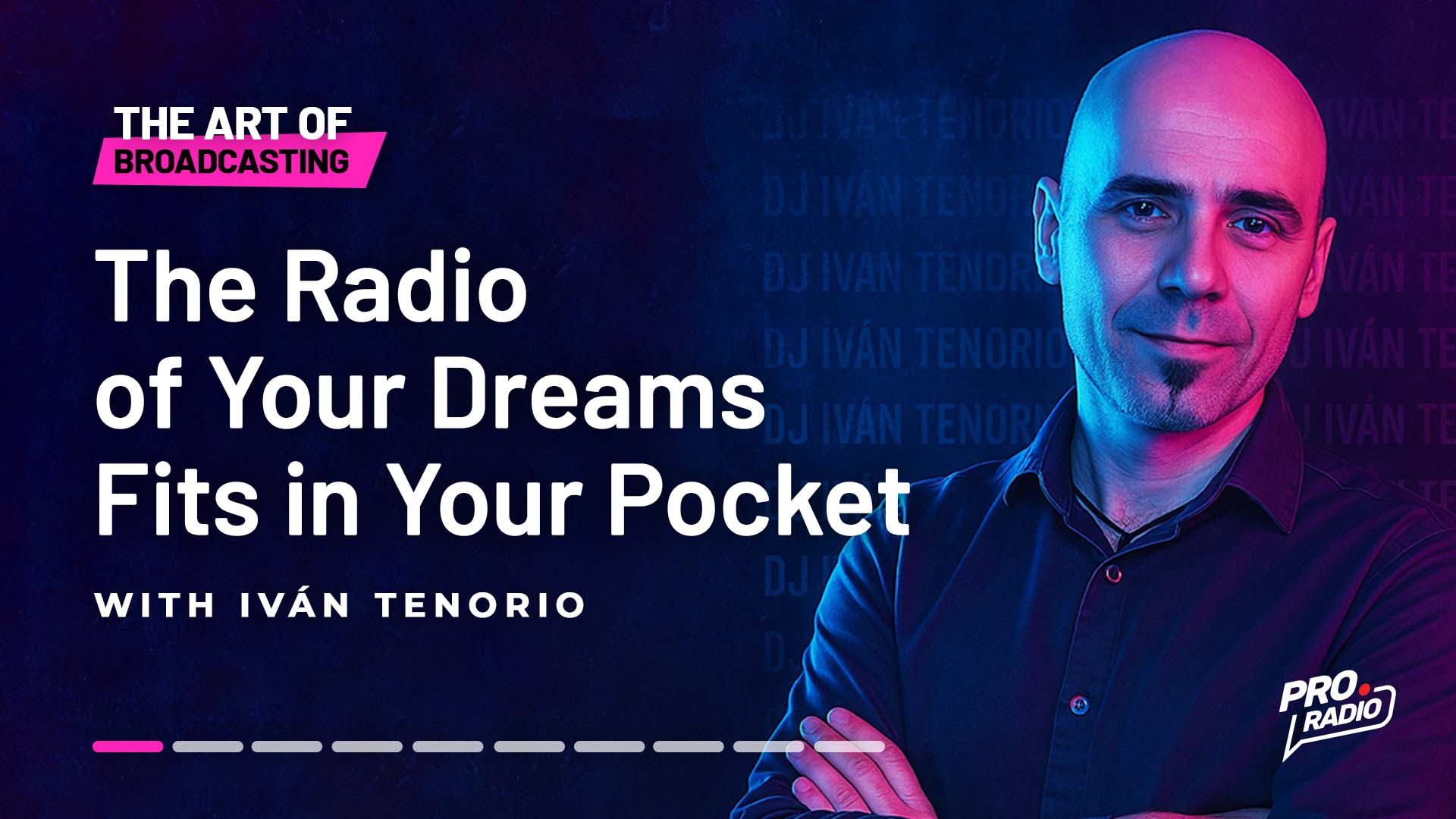
- 1. Why do you want to start a radio station? That’s the key question. And surprisingly, it’s one of the least asked.
- 2. Thinking of Your Station from the Ground Up: A Professional Approach
- 3. Your Station’s Identity Can’t Be Left to Chance
- 4. Lesson Learned
- 5. Practical Exercise: Define Your Station Like a Producer
- 6. AI Hack: Create Your Project Sheet with ChatGPT
- 7. Receive the next chapters!
- 8. Start your new radio with a boost!
The Radio of Your Dreams Fits in Your Pocket
And it’s built with thought, method, and a clear intention.
For decades, setting up a radio station was a privilege reserved for those with budgets, licenses, connections, and above all, a studio full of technology. Radio was a closed club. It was spoken of with respect, but also with a certain distance. It was a medium… but also a mystery.
That has changed. And not just because of technology. What’s truly changed is the way we understand what it means to create a media outlet.
Today, you can have your own station broadcasting 24/7 from a laptop and a decent internet connection. And not just a homebrew station: a radio with professional sound, a clear identity, and a well-thought-out programming schedule… A station with soul.
But just because it’s possible doesn’t mean it’s trivial. And here’s the key: to build a station, you need judgment, method, and a clear vision. The rest — the tech gear, the software, the AI tools — are just that: tools.
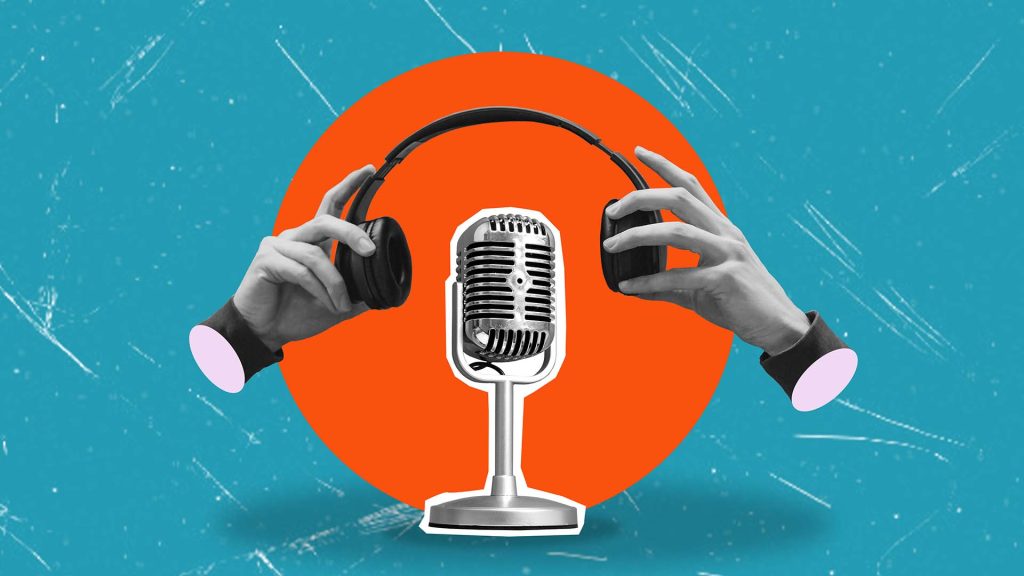
Why do you want to start a radio station?
That’s the key question. And surprisingly, it’s one of the least asked.
A lot of people dive into radio because they love the medium, because they like to communicate, because they have ideas… but they don’t stop to think of the project as a complete system. What’s the purpose of the station? Who is it for? What space does it aim to occupy? How will it sustain itself?
Creating a station requires combining two mindsets: the creative and the strategic. What some call divergent and convergent thinking. Or, more clearly: dreaming and grounding.
Thinking of Your Station from the Ground Up: A Professional Approach
The materials you’ll use to build your station aren’t cables and microphones. They’re ideas, values, decisions, audiences, and objectives. And all of that is structured through a simple but powerful method.
Here’s a roadmap to help you define your station as a real, sustainable project:

1. Creative Phase: Dream Without Limits (Divergent Thinking)
Let your imagination run wild:
- What station would you love to hear that doesn’t exist yet?
- What format, style, or tone are you missing as a listener?
- What conversation could you start that currently has no space?
- What emotions do you want to provoke in your audience?
In this phase, it doesn’t matter if what you imagine is viable. The goal is to visualize your ideal station. If you get stuck, use AI like ChatGPT to help generate ideas, formats, or programming styles. The important part is connecting with the authentic desire to make radio.

2. Analytical Phase: Ground the Idea (Convergent Thinking)
Once you’ve dreamed it, it’s time to face reality:
- What resources do you have? (time, skills, equipment)
- What can you do yourself, and what can you automate or delegate?
- How much content can you regularly produce?
- What are you good at, and what do you need to learn?
This isn’t to discourage you, but to shape and direct your idea. A viable station comes from balancing what you want to do with what you can actually manage.

3. Evaluate the Project’s Viability
Now you’re entering pro territory: treating your station as a communication project with clearly defined areas.
Ask yourself:
- Technical viability: Can you broadcast 24/7? Do you know the software/services needed?
- Communication viability: How will you stand out? What tone and aesthetic will your station have?
- Operational viability: Do you have the time, energy, and structure to maintain it?
- Financial viability: Will you monetize it? Is it a personal, educational, or commercial project?
A simple SWOT analysis (Strengths, Weaknesses, Opportunities, Threats) can help clarify things. It doesn’t need to be academic. Just think honestly.
Your Station’s Identity Can’t Be Left to Chance
A radio station isn’t just a playlist or a series of voices. It’s a sound experience, a symbolic space, an emotional environment. All of that must be intentional:
- What tone will it have? Formal, friendly, playful?
- What values does it convey even when silent?
- What atmosphere does it create? What kind of company does it offer?
This will help you build a station that’s coherent, memorable, and has its own personality. Because anyone can broadcast. The hard — and beautiful — part is when someone says: “This sounds like your station. Not like any other.”
Lesson Learned
A radio station doesn’t begin when it goes live.
It begins when it’s conceived.
A radio with soul is born from a clear idea, a defined purpose, and a solid structure.
If you know why you’re doing it, how you want it to sound, and who it’s for — you’re already halfway to creating something real.
Practical Exercise: Define Your Station Like a Producer
Take a moment and answer these calmly. This is your base doc:
Project Sheet
- Name (temporary or final):
- Main objective of the station:
- Target audience
- Unique value proposition (what makes you special?):
- Sound and aesthetic tone:
- Types of content and time slots you imagine:
- What do you do, automate, or delegate?:
- Available resources (tech, time, contacts, etc.):
- Current limitations (what are you missing?):
- Short-, medium-, and long-term goals:
This exercise isn’t bureaucracy. It’s clarity. It’ll help you make better decisions going forward.
AI Hack: Create Your Project Sheet with ChatGPT
If you want to structure it more professionally, ask ChatGPT something like:
“I’m designing a 24/7 online radio station and need a project sheet. Help me organize the information: name, objective, audience, sound style, basic schedule, resources, technical structure, and distribution channels. The style should be clear, useful, and editable.”
You’ll get an editable doc in seconds. Don’t treat it as final, but as a solid starting point. From there, you can also ask ChatGPT to generate the SWOT analysis based on it.
And remember:
AI doesn’t replace your vision.
It just helps you focus on what truly matters.
Your station begins here.
With an idea, an intention, and a commitment to yourself.
From now on, everything you add will be built on solid ground.
And that — trust me — is the best way to start.
Receive the next chapters!
Next week: Chapter 2: Your First Radio Studio.
Starting an online radio station from home doesn’t mean sounding like a small-time operation. Many professional stations today broadcast from home or hybrid setups. What makes the difference isn’t the size of the room or the cost of your gear — it’s the technical judgment behind your choices.
Sign up for our newsletter and get the next chapters in your inbox, including free templates, exclusive news, and special discounts delivered right to your inbox!
Start your new radio with a boost!
To celebrate the launch of our new podcast series ‘The Art of Podcasting’ by Iván Tenorio, we want to help all the new radios with an incredible 18% discount on all of our products.
From May 1 to 20, enjoy an exclusive 18% off on the entire Pro Radio ecosystem, including:
- Pro Radio WordPress Theme
- All-in-one Radio Website
- Every Pro Radio Add-on
Use the coupon code: NEWRADIO
You may also like
Start Your Internet Radio Station
Products
Radio Features
Copyright 2019-2026 ProRadio® Qantum Themes SL® All Rights Reserved




